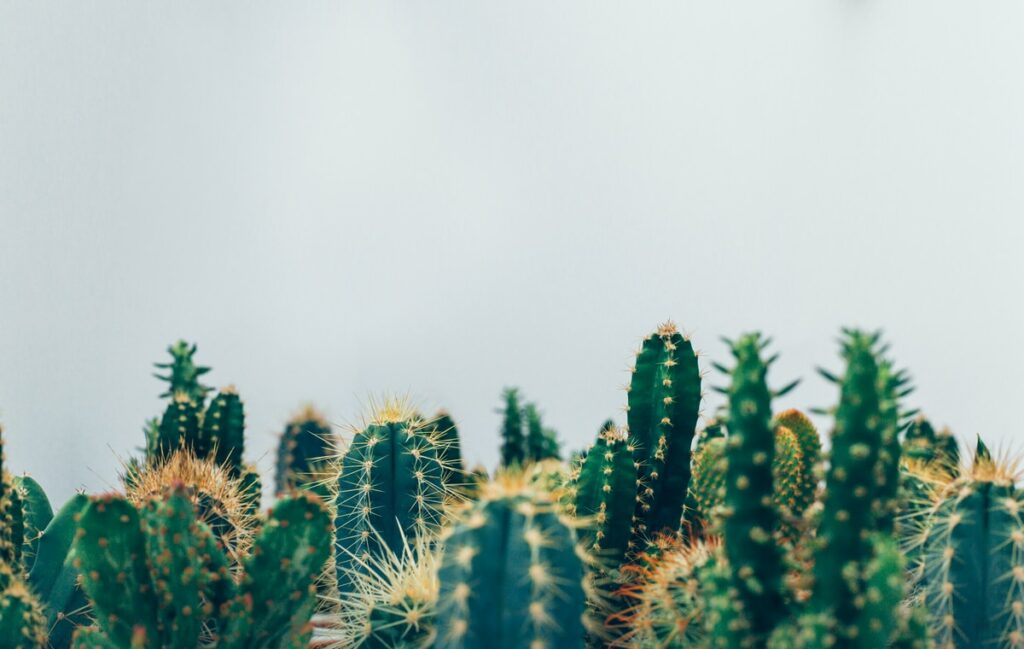$15 Flat Rate Shipping Everyday. Your order ships FREE when you spend $150 or more!

As the days get longer, the temperatures rise, and the sunlight intensifies you may notice your houseplants responding with new growth. Take advantage of the peak growing season by re-potting your houseplants. They will thrive with more room to grow and a punch of nutrients from fresh soil.
Spring and summer are the best time to re-pot as your houseplant will have time to grow into it’s new home before the lower light and colder temperatures of winter hit. But how do you know when you plant needs to be re-potted?
The clearest indicator for re-potting is when you see roots growing out from the bottom of the plant pot. Sometimes the pot can even begin to deform or crack as the plant searches for more room to grow. Root-bound plants can often be removed from the pot in one big cluster, a sign that roomier accommodations are needed. Additionally, if your plant is extremely top heavy, is growing slower than normal, or dried out quickly, it may be time to re-pot.
As a general rule, plants need to be re-potted every 12-18 months depending on how fast they grow.
You’ve decided to re-pot your plant, now what? The first step is to water your plant a few days before you plan to re-pot it. This will ensure the plant is well hydrated before its big move and make it easier to remove the plant from its pot. You will also want to ensure you have selected a new pot for the plant, ideally only one size bigger than it’s current pot, and have the proper soil on hand, as well as a small hand shovel and pruning shears.
Remove the plant from the pot by turning the pot sideways and gently holding the plant by the stems. Tap the bottom of the container or gently squeeze the sides until the plant comes out.
Loosen the root ball with your hands, carefully shaking out any excess soil and then trim any brown, black, or visibly damaged roots. Now is also a good time to clean up the plant, removing any dead foliage.
Drainage is highly recommended when potting your plants. If the ceramic pot you’ve selected to house your plant doesn’t have a drainage hole we suggest potting the plant in a plastic nursery pot that will fit inside the pretty pot. Add a layer of fresh potting soil to the bottom of the pot so that the plant sits a half inch to an inch below the rim. Place your plant in the pot and add potting soil around the plant until it is secure. Avoid mounding the soil up around the base of the plant, you want a flat layer of soil when you’re done.
After re-potting you will want to give the plant lots of light and refrain from watering for a week to allow the plant to recover. Plants can go into shock from transplanting but they will bounce back.
Most plants need soil to survive, but different types of plants have different soil needs, just like they have different water and light requirements. There are many types of potting soil available, from ultra-rich outdoor garden mixes that help retain water (not recommended for indoor plants) to cacti-specific mixes that help water drain away quickly. It’s important to pick the right soil to ensure your plants thrive!
Tag us @farandwideshop! We love to see you how you use, style & repurpose our products, and we might feature you!
Monday to Friday 10 – 5:30
Saturday + Sunday 10 – 4
| Cookie | Duration | Description |
|---|---|---|
| cookielawinfo-checkbox-analytics | 11 months | This cookie is set by GDPR Cookie Consent plugin. The cookie is used to store the user consent for the cookies in the category "Analytics". |
| cookielawinfo-checkbox-functional | 11 months | The cookie is set by GDPR cookie consent to record the user consent for the cookies in the category "Functional". |
| cookielawinfo-checkbox-necessary | 11 months | This cookie is set by GDPR Cookie Consent plugin. The cookies is used to store the user consent for the cookies in the category "Necessary". |
| cookielawinfo-checkbox-others | 11 months | This cookie is set by GDPR Cookie Consent plugin. The cookie is used to store the user consent for the cookies in the category "Other. |
| cookielawinfo-checkbox-performance | 11 months | This cookie is set by GDPR Cookie Consent plugin. The cookie is used to store the user consent for the cookies in the category "Performance". |
| viewed_cookie_policy | 11 months | The cookie is set by the GDPR Cookie Consent plugin and is used to store whether or not user has consented to the use of cookies. It does not store any personal data. |